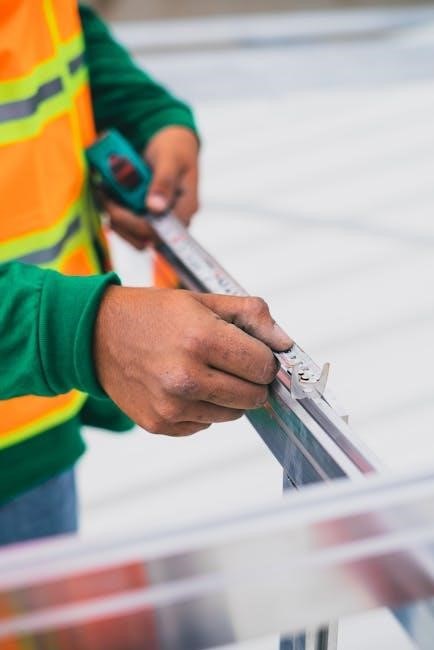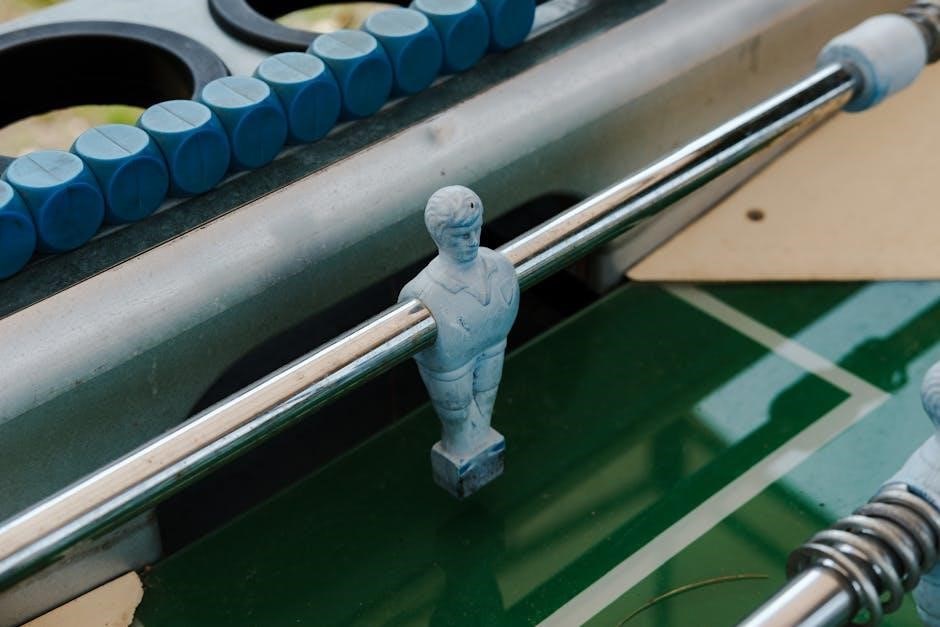An automatic to manual transmission conversion kit enables drivers to switch from automatic to manual transmission, offering better control and fuel efficiency. It includes essential components like the manual transmission assembly, clutch pedal, and gear shifter, designed to enhance driving performance and cost-effectiveness.
1.1 What is an Automatic to Manual Transmission Conversion Kit?
An automatic to manual transmission conversion kit is a collection of components designed to switch a vehicle’s transmission from automatic to manual. It typically includes a manual transmission assembly, clutch pedal, flywheel, pressure plate, gear shifter, and linkage. These parts enable drivers to manually shift gears, enhancing control and efficiency. The kit may also require adjustments to the transmission crossmember and mounts for proper installation and functionality.
1.2 Benefits of Converting from Automatic to Manual Transmission
Converting to a manual transmission offers improved fuel efficiency, especially in city driving, and enhances driver control and engagement. Manual transmissions are generally more durable and require less maintenance. Drivers also experience a more immersive driving experience with better acceleration and responsiveness. Additionally, manual transmissions often cost less to repair and replace compared to automatics, making them a cost-effective option for many vehicle owners.
1.3 Challenges and Considerations Before Starting the Conversion
Converting from automatic to manual transmission requires significant investment in parts and labor. Specialized tools and technical expertise are essential, and improper installation can lead to mechanical failures. Compatibility issues between the engine and manual transmission must be addressed. Additionally, the process can be time-consuming and costly, with potential for unexpected expenses. Proper planning and professional guidance are crucial to ensure a successful conversion.
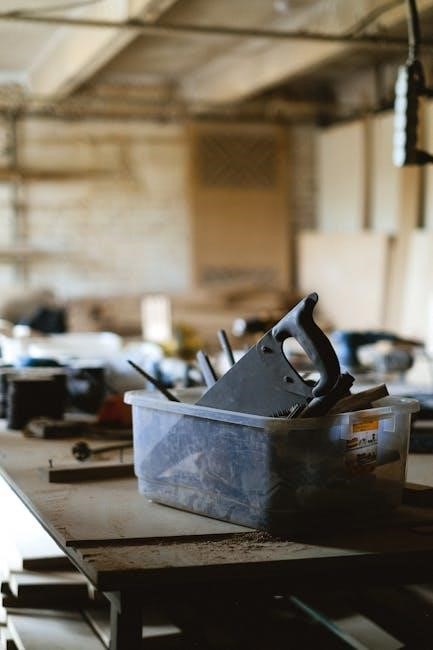
Essential Parts and Components Needed for the Conversion
The conversion requires a manual transmission assembly, clutch pedal, flywheel, pressure plate, gear shifter, and transmission mounts. These components ensure proper functionality and integration with the vehicle.
2.1 Manual Transmission Assembly
The manual transmission assembly is the core component of the conversion, consisting of gears, bearings, and the transmission case. It must be compatible with the vehicle’s engine and drivetrain. Proper alignment and installation ensure smooth gear shifting and optimal performance. The assembly is typically sourced from a compatible model or aftermarket suppliers, requiring precise fitting to maintain reliability and durability.
2.2 Clutch Pedal Assembly
The clutch pedal assembly is crucial for engaging and disengaging the manual transmission. It includes a pedal, master cylinder, and hydraulic or cable linkage. Proper installation ensures smooth clutch operation, allowing drivers to change gears seamlessly. The assembly must be compatible with the vehicle’s existing braking system and firewall layout for optimal performance and driver comfort during operation.
2;3 Flywheel and Pressure Plate
The flywheel and pressure plate are critical for smooth clutch operation. The flywheel, attached to the engine, provides a surface for the clutch disc. The pressure plate applies even pressure, ensuring proper engagement. Both must be compatible with the engine and transmission for optimal performance. Proper installation and alignment are essential to prevent wear and ensure reliable power transfer during gear shifts.
2.4 Gear Shifter and Linkage
The gear shifter and linkage are vital for precise gear engagement. The shifter connects to the transmission via rods, allowing drivers to manually select gears. Proper alignment and adjustment ensure smooth shifting. Compatibility with the transmission and vehicle setup is crucial for reliable operation. Upgrading or customizing these components can enhance driving experience and performance during the conversion process.
2.5 Transmission Crossmember and Mounts
The transmission crossmember and mounts provide structural support and stability for the manual transmission. They ensure proper alignment and prevent vibration. Often, modifications or replacement of these components are necessary for compatibility with the new manual transmission. Durable materials like steel are commonly used for strength. Proper installation is crucial to maintain vehicle stability and prevent long-term damage to the drivetrain.

Step-by-Step Process of the Conversion
Prepare the vehicle, remove the automatic transmission, install the manual transmission, connect the clutch and shifter, and perform final adjustments and testing for proper functionality.
3.1 Preparing the Vehicle for Conversion
Preparing the vehicle involves gathering tools, securing the car with jack stands, and disconnecting the battery. Drain fluids and protect surrounding components from damage. Ensure all necessary parts, like the clutch pedal and flywheel, are ready. Lift the vehicle to access the transmission area and organize the workspace to avoid losing small components during the process.
3.2 Removing the Automatic Transmission
Removing the automatic transmission involves draining fluids, disconnecting electrical connectors, and detaching hydraulic lines. Support the transmission with a jack and remove mounting bolts. Carefully lower the transmission and slide it out from under the vehicle. Ensure the area is clear and protected from damage; This step requires precision to avoid damaging surrounding components and ensures a smooth transition for the manual transmission installation.
3.3 Installing the Manual Transmission
Installing the manual transmission begins with aligning it properly under the vehicle. Secure it using the provided mounting bolts, ensuring a snug fit. Connect the driveshaft and linkages, then attach the clutch system. Double-check all connections for tightness and alignment. This step requires careful handling to ensure the transmission operates smoothly and efficiently once the conversion is complete.
3.4 Connecting the Clutch and Shifter
Connect the clutch pedal assembly to the master cylinder and ensure proper alignment with the manual transmission. Link the gear shifter to the transmission’s input shaft, securing it firmly. Bleed the hydraulic system to remove air bubbles, ensuring smooth clutch engagement. Test the clutch pedal and shifter operation to confirm proper function and eliminate any mechanical binding or resistance during gear changes.
3.5 Final Adjustments and Testing
After installation, fine-tune the clutch pedal and gear shifter for smooth operation. Test the clutch engagement point and adjust the cable or hydraulic system as needed. Ensure all linkages are properly aligned and secured. Perform a test drive to verify smooth gear shifts and proper clutch function. Check for any leaks or unusual noises. Inspect all connections and bolts for tightness before finalizing the conversion.
Cost and Time Estimates for the Conversion
Costs range from $1,500 to $4,000, depending on parts quality and labor. DIY projects save labor fees, while professional installs take 20-40 hours, varying by complexity.
4.1 Parts and Materials Costs
Parts costs for an automatic to manual conversion vary, ranging from $1,500 to $4,000, depending on quality and compatibility. The manual transmission assembly is typically the most expensive, costing $800 to $2,000. Additional components like the clutch pedal assembly ($300-$600), flywheel, and pressure plate ($200-$400) add to the total. Transmission crossmembers and mounts can cost $150-$300. Prices vary based on vehicle compatibility and part quality.
4.2 Labor Costs and Time Requirements
Labor costs for an automatic to manual conversion typically range from $1,500 to $4,500, depending on the mechanic’s expertise and location. The process can take 20 to 30 hours, with rates averaging $75 to $150 per hour. Complex swaps may require additional time and specialized tools, often necessitating a professional mechanic. DIY attempts are possible but challenging without prior experience.
4.3 Total Estimated Cost for the Conversion
The total cost for an automatic to manual transmission conversion typically ranges from $4,000 to $8,500. This includes parts ($2,500-$4,000) and labor ($1,500-$4,500). Costs vary depending on the vehicle, transmission type, and location. Additional expenses may arise for custom fabrication or engine compatibility adjustments. Consulting a professional mechanic is recommended for an accurate estimate tailored to your specific project.
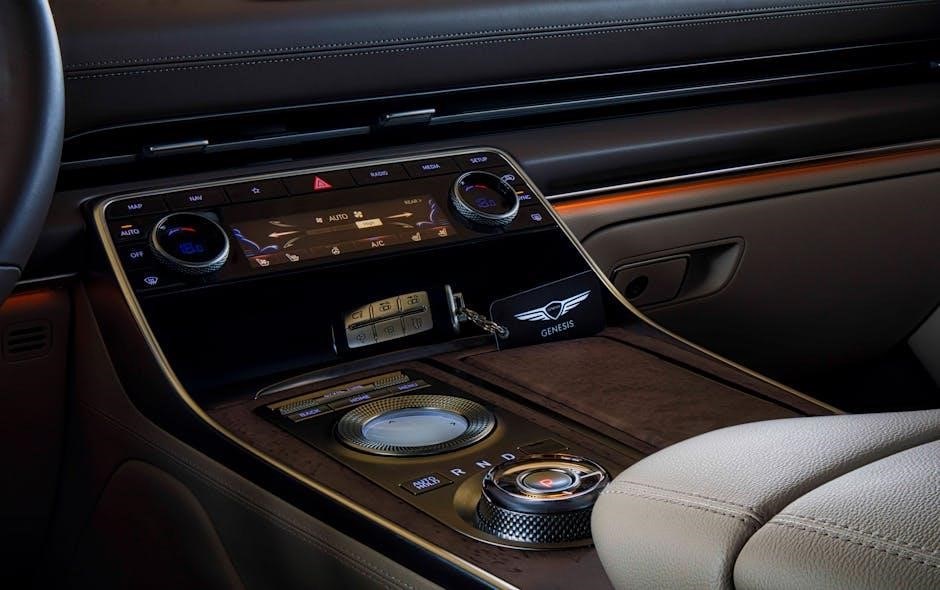
Tools and Expertise Required
A transmission jack, wrenches, and specialized tools are essential. Mechanical expertise is critical, as improper installation can lead to system failure. Proper workshop equipment ensures safety and efficiency.
5.1 Specialized Tools Needed for the Conversion
A transmission jack, socket set, torque wrench, and flywheel puller are essential. A clutch alignment tool ensures proper clutch installation. A dial indicator helps align the transmission. Specialized wrenches for manual transmission bolts and a universal joint puller may also be required. These tools ensure precision and safety during the conversion process.
5.2 Mechanical Expertise and Skills Required
Proficiency in transmission disassembly and reassembly is crucial. Experience with clutch systems and flywheel installation is necessary. Understanding of gear ratios and drivetrain compatibility is essential. Familiarity with hydraulic systems and linkage adjustments is required. Advanced mechanical skills, such as diagnosing issues and troubleshooting, are vital. Practice and patience are key to mastering the conversion process successfully.
5.3 Importance of Proper Workshop Equipment
A well-equipped workshop is essential for a successful conversion. A vehicle lift or jack is necessary for safe transmission access. A hydraulic press may be needed for bearing installations. Workbenches and vices are crucial for component repairs. Proper storage solutions prevent part loss. Specialized tools ensure precision. Adequate lighting and safety equipment, like jack stands, are vital. A clean, organized workspace minimizes errors and ensures efficiency.
Legal and Safety Considerations
Ensure compliance with local vehicle regulations and prioritize safety during the conversion process. Proper inspections and adherence to safety standards are crucial for legal and safe operation.
6.1 Ensuring Compliance with Local Vehicle Regulations
Before starting the conversion, ensure your vehicle meets local regulations. Check emission standards, safety requirements, and legal documentation. Modify the vehicle as needed to comply with laws. Proper inspections and approvals are essential to avoid legal issues. Ensure all modifications are documented and meet roadworthiness standards for safe and legal operation.
6.2 Safety Precautions During the Conversion Process
Ensure safety by wearing protective gear like gloves and goggles. Use jack stands to secure the vehicle and disconnect the battery to prevent accidental starts. Properly ventilate the workspace and avoid loose clothing near moving parts. Follow manufacturers’ instructions for tools and equipment. Regularly inspect tools and cables for damage. Never work under an unsupported vehicle, and always use proper lifting techniques to prevent injury.
6.3 Importance of Proper Vehicle Inspection After Conversion
A thorough inspection after converting to a manual transmission is crucial to ensure safety and functionality. Check for leaks, proper alignment of components, and functionality of the clutch and gearshift. Test the vehicle in a controlled environment to verify smooth operation. A professional inspection can identify potential issues before they escalate, ensuring compliance with safety standards and preventing costly repairs.
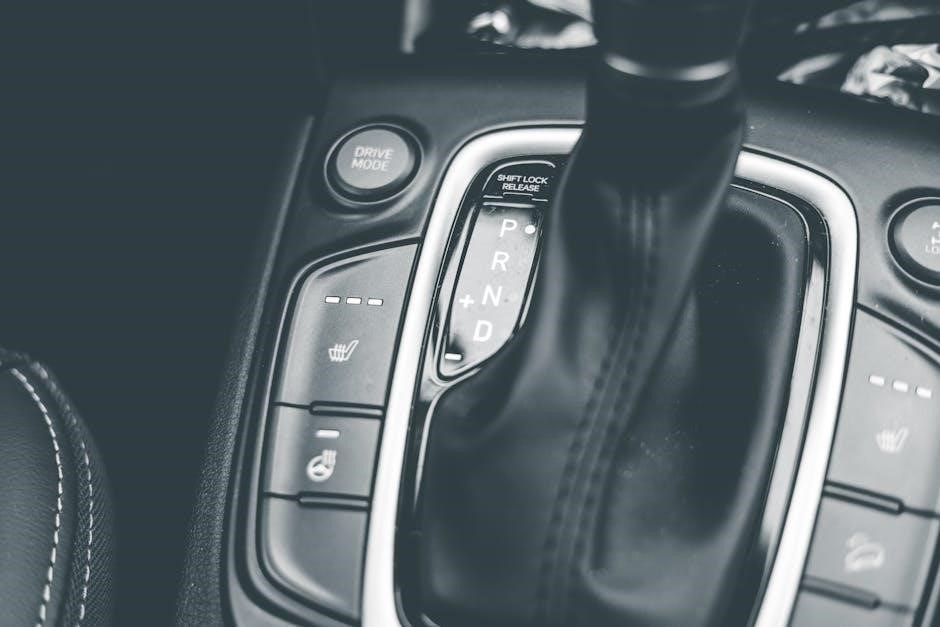
Common Mistakes to Avoid
Incorrect transmission and engine compatibility, improper clutch installation, ignoring proper alignment, and using incorrect tools can lead to conversion failures. Avoid these errors for a successful swap.
7.1 Incorrect Transmission and Engine Compatibility
Using a manual transmission incompatible with your engine can cause mechanical issues. Ensure the transmission matches your engine’s specifications to avoid costly repairs and performance problems. Always verify compatibility before installation to guarantee smooth operation and optimal performance. Proper alignment and compatibility are crucial for a successful conversion. Research and confirm specifications to avoid mismatches.
7.2 Improper Installation of the Clutch System
Improper installation of the clutch system can lead to poor performance, slippage, and premature wear. Ensure the clutch pedal, flywheel, and pressure plate are aligned correctly. Misalignment can cause uneven wear and failure. Always follow manufacturer guidelines for installation and torque specifications. Incorrect installation can result in costly repairs and compromised drivetrain functionality. Proper tools and expertise are essential for a reliable setup.
7.3 Ignoring Proper Alignment and Adjustment
Ignoring proper alignment and adjustment during the conversion can lead to vibrations, noise, and premature wear of components. Ensure the transmission is correctly aligned with the engine and chassis. Misalignment can cause drivetrain issues and affect performance. Proper adjustment of the gear shifter, clutch linkage, and bearings is crucial for smooth operation and longevity of the manual transmission system. Neglecting these steps can result in costly repairs and compromised functionality.
Converting from automatic to manual transmission offers a rewarding driving experience with improved control and efficiency. While the process is complex and time-consuming, the satisfaction of driving a manual transmission car makes it worthwhile. Proper planning, expert tools, and mechanical expertise are essential for a successful conversion. Weighing the costs and challenges against the benefits will help determine if this project aligns with your automotive goals and preferences.
